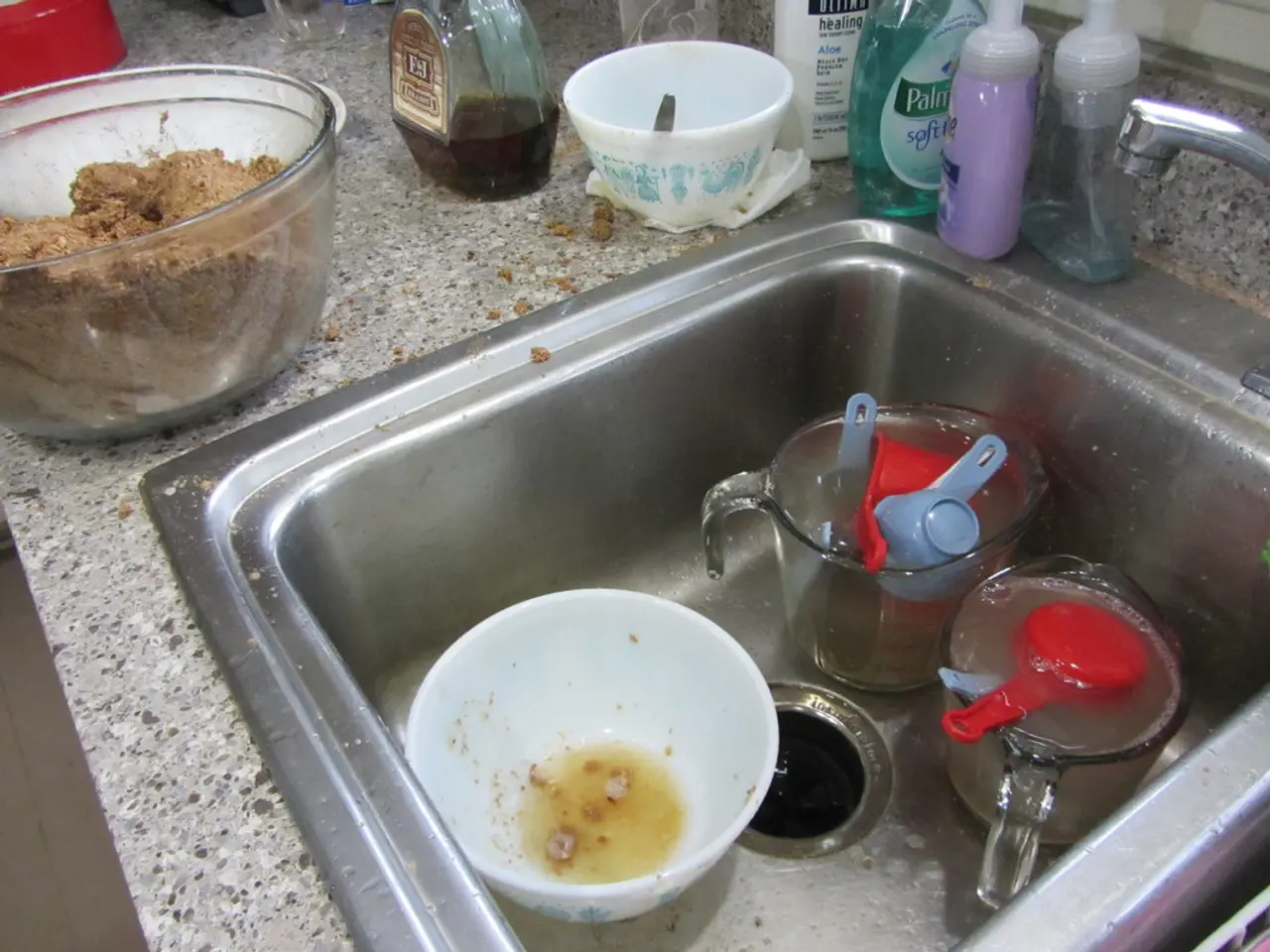Farm Disinfection Strategies in Biosecurity Measures
In the face of outbreaks of foot-and-mouth disease (FMD), swine influenza, and avian influenza, it's crucial for farmers to choose the right disinfectants to maintain a clean and safe environment. The USDA and EPA have recommended several effective and safe disinfectants for farm settings, taking into account challenges like hard water, organic matter presence, and toxicity or corrosiveness concerns.
Effective Disinfectants
- Sodium hypochlorite (bleach): Widely used and effective against these viruses, but can be inactivated by organic matter and hard water. Proper dilution is essential to avoid corrosion to metal surfaces and irritation to skin.
- Quaternary ammonium compounds (QACs): Effective against enveloped viruses like influenza and FMD virus; their efficacy decreases in the presence of organic matter and hard water.
- Glutaraldehyde and formaldehyde-based disinfectants: Broad-spectrum and effective even with organic matter, though they have higher toxicity and require cautious use with adequate ventilation and protective equipment.
- Phenolic disinfectants: Effective in the presence of organic material and hard water, moderately corrosive, and can cause skin irritation.
- Peroxygen compounds (e.g., Virkon S): Effective against a wide range of pathogens including FMD and influenza viruses under various conditions; less affected by organic load and hard water; lower toxicity and surface damage compared to aldehydes.
Key Considerations
- Cleaning first: Thorough cleaning before disinfection is critical, as organic matter significantly reduces disinfectant effectiveness.
- Water quality: Hard water reduces the efficacy of some disinfectants, so use of water softeners or fresh water where possible is recommended.
- Safety: Select disinfectants that minimize damage to farm surfaces and have acceptable toxicity profiles for workers and animals.
- Regulatory approval: Use disinfectants registered by the EPA for veterinary use or recommended by the USDA for specific pathogens like FMD and influenza to ensure validated efficacy and safety.
According to guidelines from sources such as CFSPH (Iowa State University), disinfectants should be chosen based on the target pathogen, environmental conditions, and safety profiles. Peroxygen compounds and QACs are often preferred for influenza and FMD in farm contexts due to their balance of efficacy and safety. The USDA’s Cooperative Extension also emphasizes cleaning prior to disinfection and using products tested against target pathogens under farm conditions.
Other disinfectants include phenol-based disinfectants like 1 Stroke Environ®, Osyl®, and Amphyl®, and some of the newer quaternary ammonium preparations have improved activity compared to older ones. VirkonTM S, a peroxygen molecule/organic acid/surfactant combination disinfectant, appears to have a wide spectrum of activity against many kinds of germs.
Vinegar, specifically a 4 percent solution of acetic acid, can kill the influenza and FMD virus. However, it's essential to note that plain vinegar kills the FMD virus but not the cause of Johne's disease. Disinfectants vary in their activity against bacteria, viruses, fungi, and protozoa, so it's crucial to choose a disinfectant active against a wide spectrum of germs under usual conditions.
Disinfectants must have sufficient contact time with surfaces to kill germs effectively. Information about activity in hard water or in the presence of organic debris, contact time needed, what germs are reliably killed, human use and environmental concerns, and other details are usually on the label or can be obtained from the company. Always consult the label to ensure there are no warnings against using disinfectants around feeders and in animal quarters.
In summary, for farm settings affected by FMD and swine/avian influenza, peroxygen disinfectants (e.g., Virkon S), quaternary ammonium compounds, and properly diluted bleach solutions are effective and relatively safe choices when used following cleaning and considering water quality. More toxic aldehyde compounds are effective but require stringent safety precautions. Prioritize EPA-registered products specifically labeled for these diseases and adhere to all label directions to balance efficacy with safety to humans, animals, and surfaces.
Read also:
- Elderly drivers could face a ban from the road if they don't pass a mandatory vision test under government plans, defended by the minister.
- Reinforced security recommendations issued by NFL for team and league premises after the NYC shooting incident
- Daily Habits that Reduce Inflammation and Potentially Decrease Cancer Risk
- In regions such as Gaza and Sudan, where severe food shortages have been reported, there exists a potential threat of refeeding syndrome.





